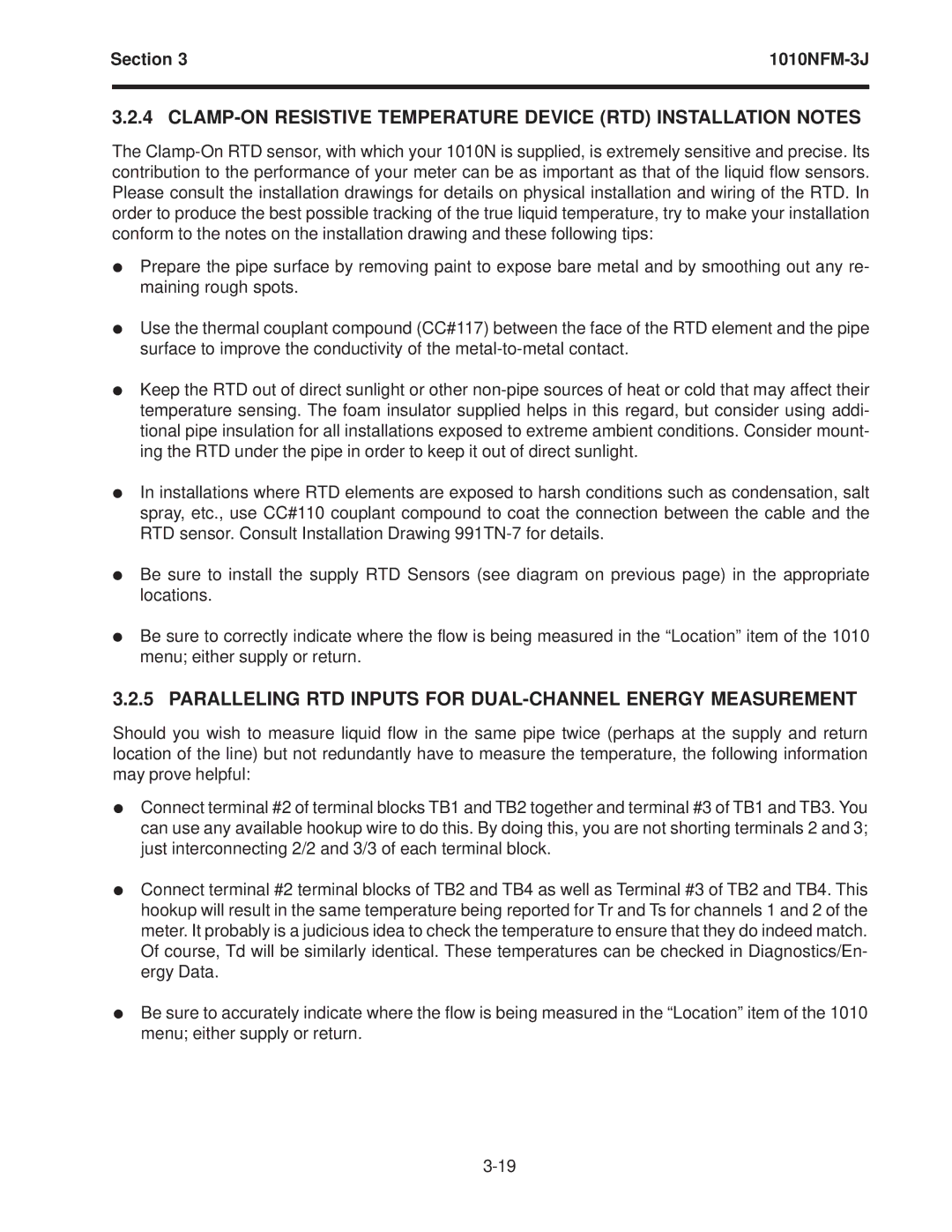Section 3 | |
|
|
3.2.4 CLAMP-ON RESISTIVE TEMPERATURE DEVICE (RTD) INSTALLATION NOTES
The
zPrepare the pipe surface by removing paint to expose bare metal and by smoothing out any re- maining rough spots.
zUse the thermal couplant compound (CC#117) between the face of the RTD element and the pipe surface to improve the conductivity of the
zKeep the RTD out of direct sunlight or other
zIn installations where RTD elements are exposed to harsh conditions such as condensation, salt spray, etc., use CC#110 couplant compound to coat the connection between the cable and the RTD sensor. Consult Installation Drawing
zBe sure to install the supply RTD Sensors (see diagram on previous page) in the appropriate locations.
zBe sure to correctly indicate where the flow is being measured in the “Location” item of the 1010 menu; either supply or return.
3.2.5PARALLELING RTD INPUTS FOR DUAL-CHANNEL ENERGY MEASUREMENT
Should you wish to measure liquid flow in the same pipe twice (perhaps at the supply and return location of the line) but not redundantly have to measure the temperature, the following information may prove helpful:
zConnect terminal #2 of terminal blocks TB1 and TB2 together and terminal #3 of TB1 and TB3. You can use any available hookup wire to do this. By doing this, you are not shorting terminals 2 and 3; just interconnecting 2/2 and 3/3 of each terminal block.
zConnect terminal #2 terminal blocks of TB2 and TB4 as well as Terminal #3 of TB2 and TB4. This hookup will result in the same temperature being reported for Tr and Ts for channels 1 and 2 of the meter. It probably is a judicious idea to check the temperature to ensure that they do indeed match. Of course, Td will be similarly identical. These temperatures can be checked in Diagnostics/En- ergy Data.
zBe sure to accurately indicate where the flow is being measured in the “Location” item of the 1010 menu; either supply or return.
